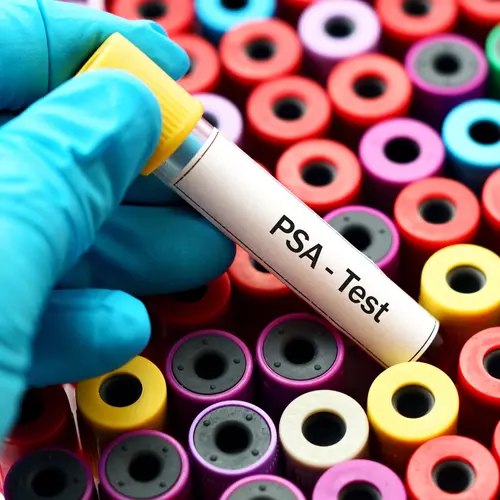Prostate cancer is one of the most commonly diagnosed cancers for men in the U.S. You may be treated with surgery, chemotherapy, or radiation for this disease of the male reproductive system.
Now, advances in radiology can better target prostate cancer cells in your body, while protecting healthy cells around them. Doctors first used radiation to treat cancer more than 100 years ago. Beams of high-energy X-rays from outside the body are directed to kill cancer cells inside your body. About half of all cancer patients get some form of radiation during their treatment.
But the challenge over all those years has been how to stop or slow the growth of a tumor, while protecting the normal tissue around it from harmful radiation exposure. Even with the most modern equipment, standard radiation therapy can result in your loss of taste, skin changes, hair loss, diarrhea, and sexual problems.
What Are Radiopharmaceuticals?
Some answers may be found in a new class of drugs called radiopharmaceuticals. These radioactive drugs target cancer at the cellular level. They hunt down and kill just the cancer cells in your prostate and other parts of your body where they may have spread. It could lower both your short- and long-term side effects.
These drugs have two parts, a radioactive atom, also known as a radionuclide, and a cell-targeting molecule that finds and destroys cancer cells.
This therapy is an advance in treatment, especially if you have a form of the disease known as metastatic castrate-resistant prostate cancer. That’s because these drugs can be part of a “personalized” treatment of your cancer. They can be modified to the molecular properties of your specific tumor, and be more effective in improving your symptoms.
How Does Your Doctor Give You a Radiopharmaceutical Drug?
Here’s how it works: Your doctor will inject these drugs into a vein. When the radiopharmaceutical reaches and sticks to a cancer cell, the radioactive compound starts to break down. As it decays, it damages the DNA of nearby cells. Cancer cells are sensitive to DNA damage from radiation. So that energy can penetrate and kill more cancer cells.
You will likely get several injections, a few weeks apart. Research shows this therapy can also relieve pain.
How Does a Radiopharmaceutical Find Its Target?
Prostate cancer cells have large amounts of a protein called prostate-specific membrane antigen, or PSMA. It is found in almost all forms of the disease, including metastatic and castrate-resistant cancers. A radiopharmaceutical (called lutetium Lu 177 vipivotide tetraxetan, brand name Pluvicto) has been created to latch on to PSMA. So when this drug enters your bloodstream, it will hunt down its cancerous targets all over your body. It can destroy even small amounts of cancer cells with beta particle radiation. Beta particles are small, fast-moving particles of radiation that are less damaging to living tissue.
Possible side effects
You may experience some of these side effects while being treated with a radiopharmaceutical:
- Low red blood cell count
- Low white blood cell count
- Tiredness
- Kidney damage
- Dry mouth
- Nausea
- Constipation
- Loss of appetite
How Do Radiopharmaceuticals Treat Prostate Cancer That Has Spread to the Bones?
When prostate cancer spreads beyond the prostate gland and the lymph nodes around it, it can attack the bones of the pelvis and spine. That can cause pain and fractures that can impact every aspect of your health. One major goal of radiopharmaceutical treatment is to slow or stop the cancer from reaching your bones.
These drugs are made to do that:
They are injected into a vein and go to areas where cancer has damaged bones. They give off radiation to kill cancer cells. They can also help relieve your pain. These drugs can be used to treat cancer that has spread to bones other than pelvis and the spine, too. Unlike external beam radiation, they can reach all the bones that have cancer in them at the same time.
Radium-223 has been shown to treat men whose prostate cancer has spread only to their bones, instead of their organs. If your cancer has spread this way, this treatment may help you live longer.
These medications also reduce blood cell counts, and that can give you a higher risk for bleeding and infections.
Progress and Challenges of Prostate Cancer Treatment
Many newer radiopharmaceuticals are actually re-engineered versions of compounds that were first designed to capture an image of your cancer. Molecules used to show the location of cancer cells (such as those used in PET scans) are now being created with more powerful radioactivity. That way, they may be able to find and kill your cancer cells, instead of just creating a picture of them.
Another advance is combination therapy. In one combination, radiopharmaceutical treatments are being used along with immunotherapy. Immunotherapy (also known as immuno-oncology) uses the power of your body’s own immune system to prevent, control, and eliminate cancer. Some studies have shown radiopharmaceuticals can make cancer cells more “visible” to immunotherapy, and make it more effective against tumors.
Disparities in Prostate Cancer Care
The progress of radiopharmaceuticals could help offset one of the big challenges for the health care community in treatment of men with prostate cancer: the difference in survival rates among races. While most cancers have some differences attributed to race, prostate cancer shows one of the most dramatic.
Black men in the United States have 1.5 times greater chance of getting prostate cancer than white men. They’re more than twice as likely to die from it. Black men make up roughly 30% of all prostate cancer deaths.
So whether it’s treatment with new technologies like radiopharmaceuticals, or more traditional therapies, a better understanding of biology associated with race – and other factors – may help improve prostate cancer survival outcomes.

